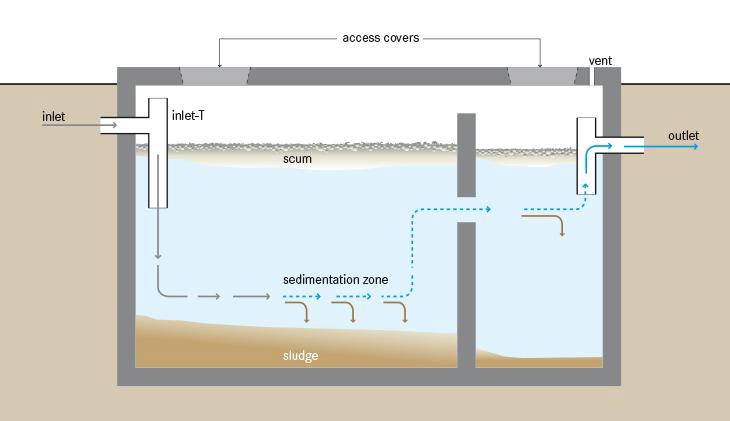
A septic tank is a large underground box made of plastic, fiberglass, and concrete. Wastewater from the home or facility flows into them for treatment. They are typically inserted in areas not connected to a local sewage plant, such as rural areas. It then goes into a septic drainage system for further treatment.
Groundwater Pollution Issues Can Arise
Unfortunately, fecal sludge tends to build up faster than the anaerobic bacteria can decompose it. As a result, there are vacuum trucks that can stop at the tank and remove it. Or the tank can be coupled with other wastewater treatment outlets, such as biofilters. Those outlets provide forced aeration to push out stubborn solids.
What Happens If A Tank Is Not Emptied?
If the septic tank is not emptied, the tank eventually leaks. This is also very bad for the environment because it can ruin the soil’s pores, robbing the soil of itsbreathe and fertility. The solid waste can also easily get into the leach field piping, which leads to costly repairs and replacements.
How Often Are Tanks Emptied?
You can search online for any type of septic tanks that are in your area. In some, health authorities put requirements on the intervals. In others, it’s left to the judgment of inspectors. However, the average interval is three to five years. It largely depends on how much waste tends accumulate in them. Some have been known to go as long as 20 years without needing to be emptied. Typically, older systems have to be emptied more frequently than newer ones. However, it also depends on how frequently they’re used.
How Long Do Tanks Last?
The average tank lasts for up to 20 years. However, ones that have been very well taken care of have been known to last for as long as 40 years. Ones made primarily of plastic or concrete tend to last the longest. Some are made of steel, which is durable. However, steel tends to rust rather quickly, making it easy to leak.
How Can I Make My Tank Last?
First, make sure it’s installed correctly. If it’s not, it can fail within days or weeks. It should also be placed as far away from you roof, bodies of water, and plants with long roots as possible. Flushes should remain conservative. If you have a malfunctioning toilet or other plumbing fixture, get it repaired or replaced as soon as possible! If you don’t, it can strain the system. Also, make sure that nothing but waste and toilet paper get flushed into it. Even sanitary wipes can clog it.
Septic’sAre Their Own Systems
Again, tanks are usually an alternative to systems that are not connected to metropolitan wastewater systems. As a result, they have their own systems of treating the wastewater. A septic tank isn’t something in which waste can simply be flushed and that’s the end of it. Even what is flushed down it has to be monitored because it otherwise backs things up too easily. Leaky wastewater is very unhealthy to deal with and must be prevented by all means necessary.



